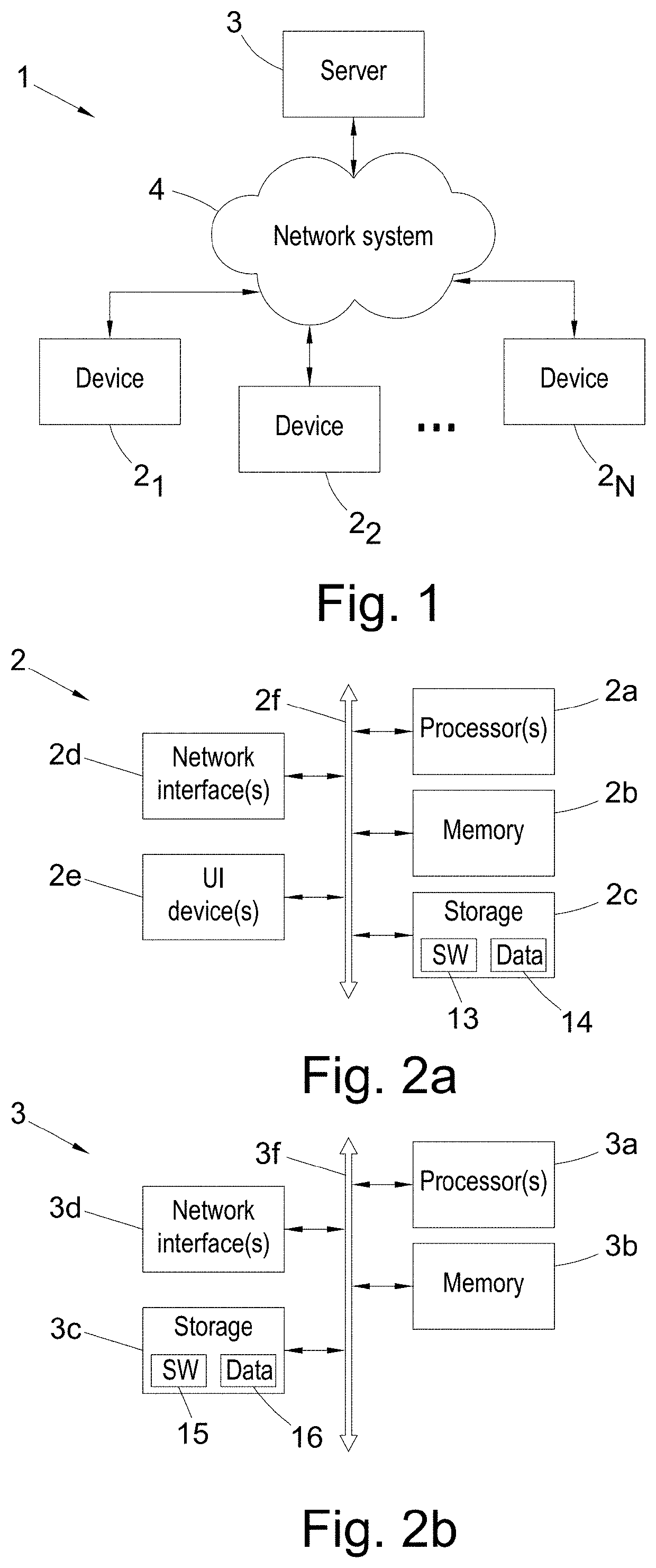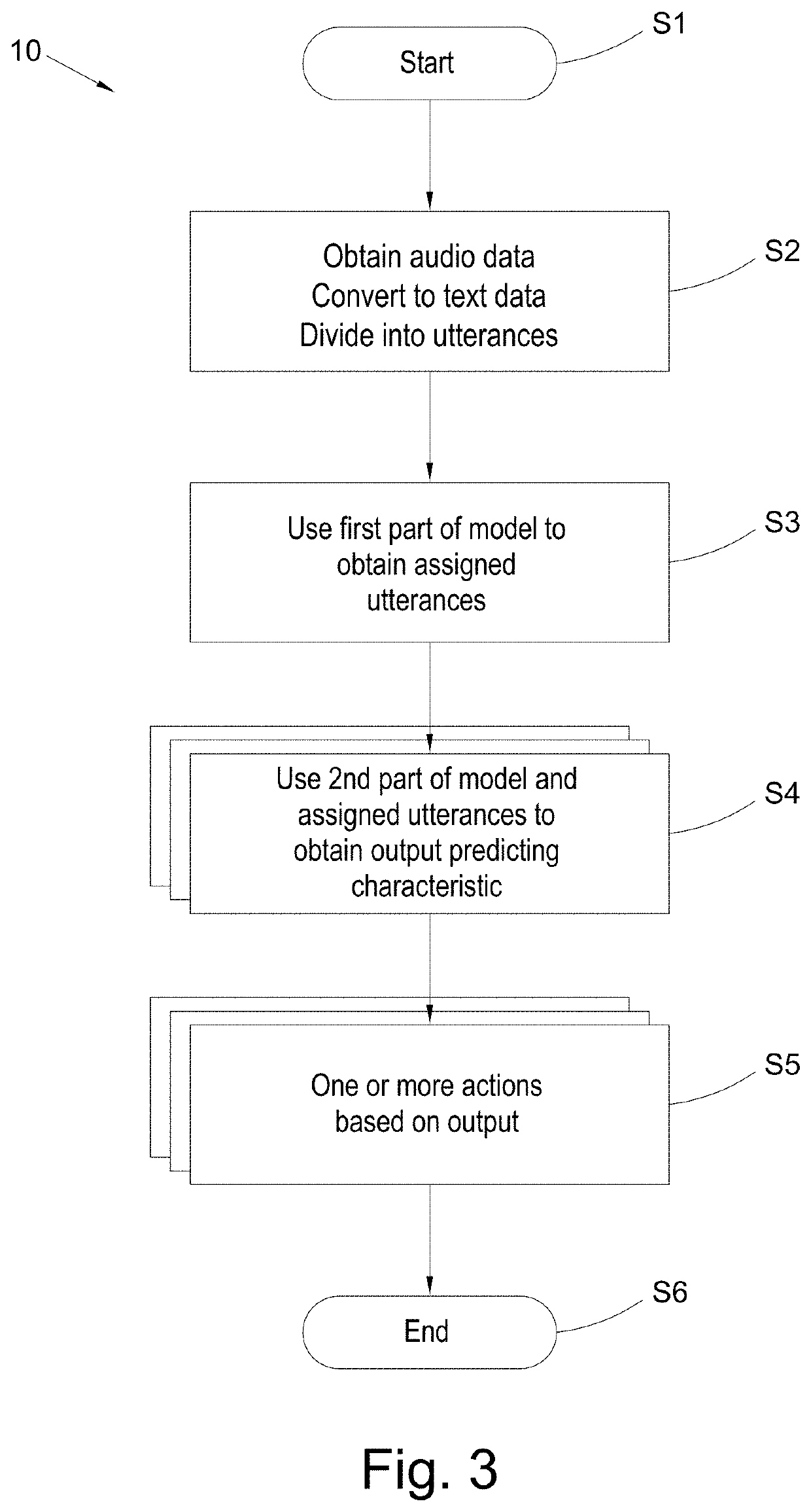Methods, systems and apparatus for improved therapy delivery and monitoring
a technology of improved therapy and monitoring, applied in the field of methods, systems and apparatus for improving therapy delivery and monitoring, can solve the problems of slow improvement rate of treatment, poor average quality of care of mental health disorders, stagnation of mental disorders, etc., and achieve the effect of improving patient outcomes, improving patient care quality, and improving patient outcomes
- Summary
- Abstract
- Description
- Claims
- Application Information
AI Technical Summary
Benefits of technology
Problems solved by technology
Method used
Image
Examples
example 1
[0200]In this example, the one-to-one component of IECBT therapy sessions (i.e. patient-therapist interactions) was provided as text transcripts (text data). Within each transcript, individual parts of the text were automatically nominated as utterances, and were identified as originating from either the therapist or the patient, based on the individual text-based messages sent from either the therapist interface or the patient interface during the therapy session. Therefore the transcript of the therapy sessions was divided into therapist utterances and patient utterances, and also retained information regarding the relative positions of the utterances in the therapy session.
[0201]The next stage of the process was to design suitable semantic representations. In this example the semantic representations used were tags. A set of tags was designed to classify therapist and user / patient utterances. These tag-sets had to satisfy multiple requirements; they needed to:[0202]Be unambiguous...
example 2
[0216]For a subsequent expanded test using transcripts of 170 therapy sessions, only the therapist utterances (totaling 6698 individual utterances) were included.
[0217]The transcript data from 150 of the 170 hours of therapy sessions were used to train a deep learning utterance classification model, while the remaining 20 hour session transcripts were kept back for evaluating the accuracy of the model. The evaluation results are presented in FIG. 10, and indicate that the approach is feasible. The performance for each category was again measured using the F1 metric. As can be seen, even from a small amount of training data, many categories achieve F1 values of over 60%.
[0218]To confirm the results of the feasibility test, the overall F1 (macro-averaged) was also measured as a function of the number of session transcripts used as training data. As can be seen from FIGS. 11a and 11b, the accuracy of the utterance tagger continues to improve as more training data becomes available. Fur...
example 3
[0219]The resulting automatic utterance categorisation model was then used to tag a large number of therapy session transcripts (around 20,000). The relative frequency of each different therapist utterance type allocated by the model or a human annotator was plotted, as shown in FIG. 12. As can be seen, utterances in the ‘change mechanisms’ category, which constitute the active ingredient in cognitive behavioural therapy, made up the largest part of therapist utterances during the therapy sessions analysed using the model.
PUM
 Login to View More
Login to View More Abstract
Description
Claims
Application Information
 Login to View More
Login to View More - R&D
- Intellectual Property
- Life Sciences
- Materials
- Tech Scout
- Unparalleled Data Quality
- Higher Quality Content
- 60% Fewer Hallucinations
Browse by: Latest US Patents, China's latest patents, Technical Efficacy Thesaurus, Application Domain, Technology Topic, Popular Technical Reports.
© 2025 PatSnap. All rights reserved.Legal|Privacy policy|Modern Slavery Act Transparency Statement|Sitemap|About US| Contact US: help@patsnap.com



